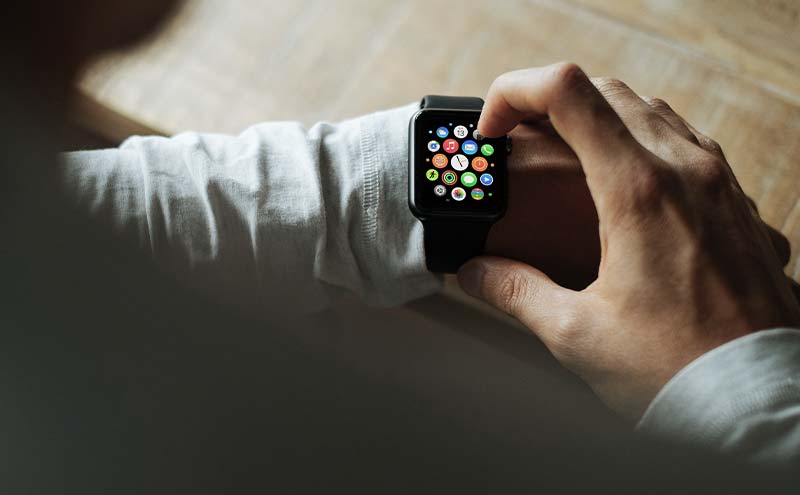Wearable technology has many industrial safety applications. How can mining and other industry successfully implement this technology to improve worker safety and relieve critical concerns?
On a broader scale, technology underground has improved dramatically in recent years. Autonomous vehicles, simulation trainers and the roles technology plays in mining safety are rapidly growing. As we become increasingly dependent on it, we are less able to avoid integration.
Safety is a pervasive concern for the site; there is a strong trend to adopt tools that can help to improve safety. Wearable technology is in a progressive phase but has the potential to change the landscape of safety underground. How can the industry ensure that the adoption of wearable technology has adequate consideration and buy-in from all levels?
Have We Considered the Impact of Wearable Technology Enough?
Critical Concerns about Adopting Wearable Technology
Wearable technology has been around for a few years now, as I quickly glance around the office, I can see several smartwatches, activity trackers, and audio devices, to name a few. The adoption of this technology in our everyday lives has been vast, but its growth within the mining industry has only slightly developed. What concerns are slowing the pace of adoption in mining?
There are several challenges Health, Safety, and Environmental (HS&E) managers face, as wearable technology integrates underground.
The Teething Period
New technology releases are prone to coming up short. The hype behind the product and the known potential often does not compete against the clunky operations and limitations of the final product. In the mining industry, it’s easy to say this is where we are now. As technology companies adapt their products to the environmental challenges of underground mines, there is often a growth period to ensure the product meets key concerns across all levels of each organisation.
The adoption of wearable technology for mines is complicated; as it finds its footing underground, and begins to cope with the environmental pressures, we can see improvements in adoption. Rather than viewing these preliminary designs as a bulky and cumbersome addition to traditional PPE, should HSE personnel be working with OEMs to drive the tech in the direction they want?
The Right Network and Connectivity
Mining and resource sites are becoming more connected through the adoption of the Industrial Internet of Things (IIoT). Underground connectivity enables the transfer of data and communications, providing a deeper level of analysis and insights for more efficient operations.
Digitally prevalent mines have adopted networks across their site. However, not all sites have this capability. Financial and geographical barriers are just a couple of challenges some mines face. There must be a reliable, robust communication network underground to support the initial setup as well as future demands, to see the full benefit of wearable technology and IIoT in mining.
Blurred Lines: Who Has Access to the Data?
Understandably, a significant concern is the use and access of data.
There is an inevitability that we will need new guidelines and laws to address ethical, moral and security issues around wearable computers and tracking. For safety reasons, wearable technology will become more personalised; not only tracking the location of personnel but monitoring other occupational dangers such as stress, fatigue, and environmental risks. The more intelligent and personal wearable technology becomes, the more the data needs to be protected. Privacy is a critical concern, not only for the individual but companies as well.
"Connectivity across various devices, including intelligent PPE, will provide sites and HSE manages with a real-time, complete view of the environment, machinery, and health of personnel on-site."
Improving Safety Through Wearable Technology Tweet
How Will Wearable Technology Change the Future of Personal Safety?
As sites incorporate more technology, we will collectively see a shift towards safer, healthier, and more productive work environments.
Currently, on the market, there are portable gas monitors, cap lamps with tracking, and training aids; you’d be hard-pressed to find a mining expo without virtual headsets or simulators. Beyond these standard tools, wearable technology is going to change safety underground dramatically.
As mines dig deeper, there will become a continued reliance on PPE to adapt and evolve to the changing surroundings of the mine, such as rising temperature, gas levels, and dust particulate exposure.
The adoption of wearable technology will change underground safety. Some examples include:
- Wearable technology will become another viable source of data. IIoT is making sites more connected, seamlessly gathering information from multiple touchpoints. Connectivity across various devices, including intelligent PPE, will provide sites and HSE managers with a real-time, complete view of the environment, machinery, and health of personnel on-site.
- Interactions between machines and humans will become all-in-one, evolving with technology to build more efficient and safer operations. By pairing safety and environmental data with information from sensors and equipment, we can implement progressive or corrective actions with zero latency.
- Safety will be pre-emptive and personalised. As the changing workforce embraces new technology, safety must adapt. Technology presents an opportunity to manage protection unique to the individual.
You could say mining is the backbone of technology; many of the essential components within these devices have been sourced from underground mines. So it is somewhat poetic that technology is being fed back into the industry to improve operations and safer environments.
There are apparent challenge companies which both sides face to implement technology underground successfully. However, as wearable technology is becoming smarter and more advanced, the benefits to individuals, managers and companies far outweigh any issues.






